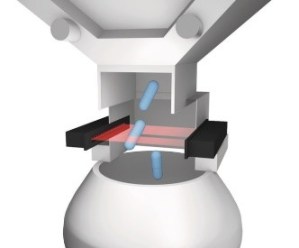In the dynamic landscape of the Industrial Internet of Things (IIoT), one cannot ignore the pivotal role of industrial sensors in revolutionizing manufacturing processes. As we navigate this era of unprecedented connectivity and data-driven decision-making, the true potential of industrial sensors becomes increasingly evident, offering a myriad of benefits to industries worldwide.
Eyes and ears of smart factories
At the heart of this technological renaissance, industrial sensors function as the eyes and ears of smart factories, creating a symphony of data that empowers manufacturers to optimize operations, enhance overall efficiency, and increase profits. The advent of IIoT has amplified the capabilities of these sensors, turning them into indispensable assets for organizations aiming to stay ahead in the competitive industrial landscape.
Imagine a manufacturing floor where every piece of machinery seamlessly communicates with each other, providing real-time data on performance, status, and potential issues. This interconnected ecosystem is made possible by the deployment of advanced industrial sensors and advanced analysis systems. These devices are not merely passive observers; they are the linchpins of a connected industrial infrastructure, facilitating predictive maintenance, reducing downtime, increasing profits, and saving costs.
Real-time data for optimal efficiency
 One primary advantage of industrial sensors and systems in the IIoT era is their ability to gather massive volumes of data. This influx of information allows for comprehensive analysis, enabling manufacturers to identify patterns, detect anomalies, and make informed decisions. Predictive analytics powered by industrial sensors transform reactive maintenance into a proactive approach, preventing equipment failures before they occur and ensuring seamless production processes.
One primary advantage of industrial sensors and systems in the IIoT era is their ability to gather massive volumes of data. This influx of information allows for comprehensive analysis, enabling manufacturers to identify patterns, detect anomalies, and make informed decisions. Predictive analytics powered by industrial sensors transform reactive maintenance into a proactive approach, preventing equipment failures before they occur and ensuring seamless production processes.
Predictive maintenance
Moreover, integrating artificial intelligence (AI) and machine learning (ML) algorithms with industrial sensors takes predictive maintenance to the next level. These intelligent systems can learn from historical data, adapting to changing conditions and continuously improving their accuracy. The result is a finely tuned predictive maintenance strategy that not only minimizes downtime but also extends the lifespan of machinery, optimizing return on investment.
In the IIoT landscape, security is paramount. Industrial sensors, when harnessed correctly, contribute to building robust cybersecurity frameworks. As data flows between devices, encryption protocols and secure communication channels safeguard against potential cyber threats. This initiative-taking approach ensures the integrity of sensitive information and protects against unauthorized access, a crucial aspect in an interconnected industrial ecosystem.
Driving the next industrial revolution
The IIoT era has unshackled the true potential of industrial sensors and systems, transforming them from passive observers to proactive catalysts for innovation. As we continue to explore the boundless possibilities of connectivity and data-driven insights, industrial sensors stand as the unsung heroes, driving the next industrial revolution and ensuring a future where efficiency, sustainability, and competitiveness converge seamlessly on the factory floor.
































